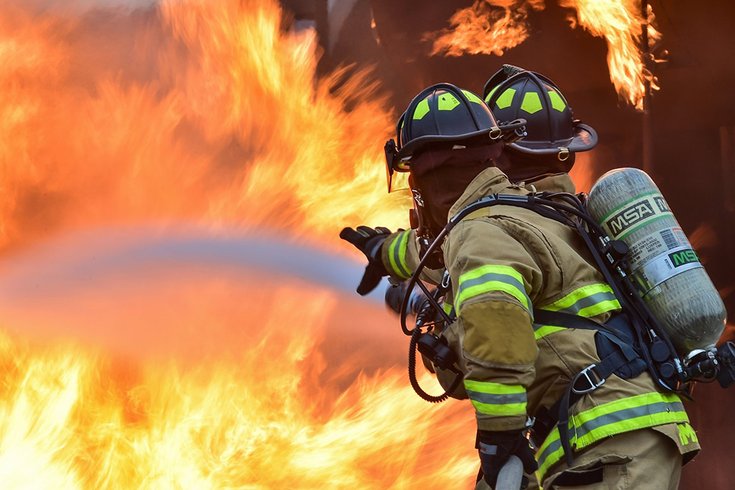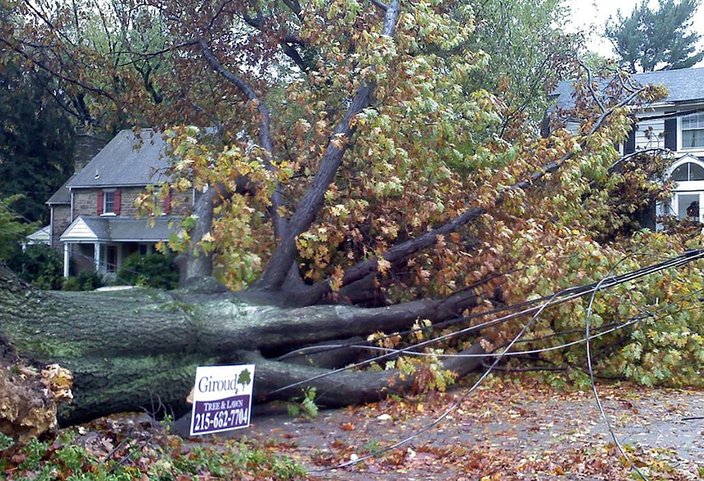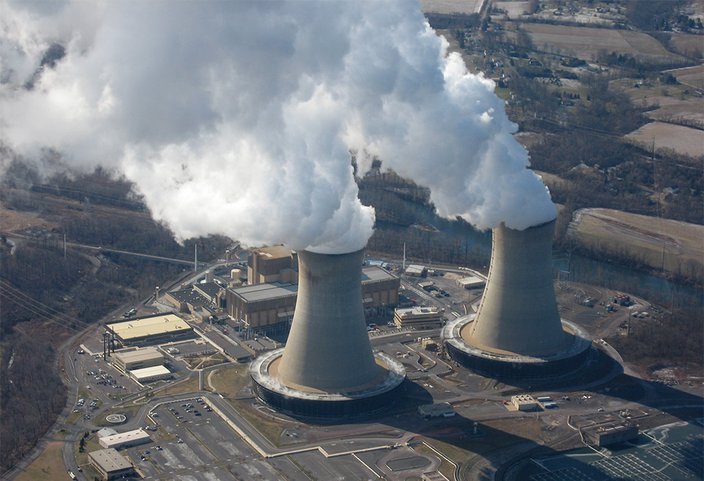
June 08, 2018
 Pixabay.com/via Pexels
Pixabay.com/via Pexels
Smoke alarms typically sound about 6-to-8 minutes before flame is visible. This is the time to enact your emergency response plan.
Disaster can strike with little warning, forcing people to make snap decisions. Often times, their lives are on the line.
To help readers be ready for an array of emergency situations, PhillyVoice compiled the following "Survival Guide" by reaching out to public safety experts.
The guide provides instructions on how to respond to active shooters, rowhouse and high-rise fires, hurricanes and tropical storms, flash floods and submerged vehicles, and nuclear attacks and power plant meltdowns.
Additionally, Philadelphia residents can receive free emergency alerts by joining the city's "ReadyPhiladelphia" mass notification system. Sign up by visiting www.phila.gov/ready or texting READYPHILA to 888-777.
There have been 152 public mass shootings in the United States since August 1, 1966, when a University of Texas student opened fire from a clock tower observation deck, killing 17 people.
Nearly one-third of them have occurred in the last 10 years.
And nine of them came during the last calendar year, including the deadliest, modern-day mass shooting on American soil: 58 people dead and 851 others wounded when a 64-year-old, heavily-armed gunman shoots down from his hotel room on the Las Vegas Strip onto the crowd at a night-time, outdoor music festival in October 2017.
Those mass shooting figures are according to a recent Washington Post analysis, which defined such an event as any shooting that left at least four people dead – not counting gang disputes, robberies gone awry and slayings in private homes.
The shootings have sparked endless debates about gun control in this country, but little legislation has resulted. And there are no indications that mass shootings will cease anytime soon.
So how can you protect yourself if you someone starts shooting while you are shopping at a mall or sitting in a classroom or singing along at a concert?
We asked security experts how to survive an active shooter situation. Here is their advice:
• Active shooter cases tend to be unpredictable and evolve quickly. In many cases, there is no pattern or method to the way a shooter selects victims. It typically falls to law enforcement officers to stop the shooting and mitigate harm.
• Be aware of your environment and any potential dangers. Know where the two nearests exits are in any facility you enter.
• Determine the most reasonable way to respond to an active shooter situation – running, hiding or fighting.
• Run: If there is a viable escape path, attempt to evacuate. Have an escape plan in mind, leave your belongings behind and keep your hands visible. If possible, help others escape, but do not attempt to move wounded individuals. Prevent any individuals from entering an area where the shooter might be located. Follow the instructions of any police officers you encounter.
• Hide: If you cannot evacuate, find a place to hide where the shooter is unlikely to find you. Stay out of the shooter's view. If you are in an office or classroom, lock the door. Barricade the entrance with heavy furniture to prevent the shooter from entering. If the shooter is nearby, silence your phones and any other sources of noise, hide behind large items and stay quiet.
• If you cannot evacuate or hide, remain calm. Dial 911, if possible, to alert police to the shooter's location. If it is unsafe to speak, keep the line open and allow the dispatcher to listen.
• When calling 911, inform the operator, if you can, of the number of shooters, their location, physical description and the number and type of weapons they are carrying. Also note the number of potential victims.
• Fight: Only when your life is in immediate danger should you try to disrupt or take down the shooter. In doing so, act as aggressively as possible, yelling and throwing items at the shooter. Fully commit to your actions.
• Once law enforcement arrives, remain calm and follow instructions. Put down anything in your hands and raise them upward, with fingers spread apart. Avoid making quick movements toward officers, pointing or yelling.
• Be aware that police may arrive wearing SWAT gear – bulletproof vests and kevlar helmets – and armed with rifles, shotguns or handguns. They also may shout commands or push individuals to the ground to protect their safety.
• The first officers on an active scene will not stop to assist injured people as the priority is to stop the shooter. Rescue teams will follow the initial officers, ready to treat and prepare injured victims for transport to a hospital.
Source: U.S. Department of Homeland Security
The Philadelphia Fire Department responds to at least 44,000 fire calls each year, ranging from small kitchen fires to high-rise blazes. In fact, there were 20 fatal fires in the city in 2017. Many of them might have been prevented by a smoke alarm.
But if fire ever strikes your home or office, you can reduce your risk of dying with good prevention and response plans, and practical safety knowledge.
Battalion Chief Thomas Kane and Lt. Bernard Gilliam, officers in the fire prevention division, provided these general fire safety tips:
• Install smoke alarms on every floor of your house. The Fire Department has 26,000 fire alarms and 4,000 adaptive smoke alarms for people with hearing disabilities. Any city resident who calls 311 can have one installed for free. "It's that simple," Kane said.
• Install a carbon monoxide alarm near the bedrooms of your home – not in the basement. Kane recommended purchasing CO alarms that include a readout. That way, residents can tell when CO levels spike and if they have returned to normal.
• Develop an emergency response plan that includes an evacuation plan and designates a meeting place. "A meeting place is one of the most key parts to it," Kane said. "Get out and make sure everybody meets at the same place so you don't go back in looking for somebody who is already out."
• Schools and other institutions conduct regular fire drills. So should your household. "Everybody can relate to the fact that very few people burn up in a school," Gilliam said. "Most (fire victims) are in their homes. So why not be prudent and practice a fire drill within your own home?"
• Close your bedroom door at night. If a fire does occur, a closed door provides an extra barrier from fire, slowing its progress and protecting you from smoke and toxic gases. It could give firefighters additional time to reach you.
• Smoke alarms typically sound about 6-to-8 minutes before a flame is visible. This is the time to enact your emergency response plan. "In those first few minutes, you're on your own," Gilliam said. "How you react at that particular time can be the difference of whether you survive the situation."
• When an alarm goes off at night, sit up in bed, roll onto the floor and crawl to the door. It is essential to remain low, because the air is cleanest near the floor.
• Touch the door with the back of your hand to see if it is warm. Do not use your palm. If it is hot, it could burn your hand, making it more difficult to crawl to safety. If not, open the door, peer out and exit the house if the pathway is clear.
• If the exit is blocked, immediately shut your door. Seal the gap beneath the door, turn on the lights and grab a bright article of clothing to wave. Holler out the window, "Help, fire!" to alert neighbors to your emergency and location. "Not just 'Help,'" Gilliam said. "You yell 'Fire!' 'Fire!' gets people's reaction to understand that it's a fire." If your room gets smoky, stay low and breathe through a wet towel, only through your nose.
• Once you've exited the building, do not go back inside for any reason. Communicate clearly to firefighters where any people or pets might be located inside the home. "You have to stay out," Kane said. "Because going back in, that's when people die."
• Only use a fire extinguisher if someone's life is at stake. "Other than that, it's just stuff," Gilliam said. "Call the fire department and let them help you." Too often, fire extinguishers have not been properly tested and residents don't know how to use them correctly. A live fire is not the time to troubleshoot.
• If you do attempt to extinguish a fire on your own, call the fire department first. "Always remember that those first few minutes that you notice that event – it's going to take the fire department a little while to respond," Gilliam said.
• If you live or work in a high-rise, know the emergency and evacuation plan. All high-rises are required to present it to occupants. Hotels often post it on the back of your unit's door. And apartment and condominium complexes typically provide it with various other paperwork. Know your workplace fire safety plan.
• There are three basic high-rise emergency plans. A so-called "leave" plan calls for everyone to leave the building once an alarm goes off. A "hold" plan orders occupants to go into the stairwell, close the door and wait for instructions from the P.A. system. And the "three-floor plan" instructs occupants of the floor affected by the fire to evacuate while ordering people on the the other two floors to hold in a stairwell, awaiting further instruction.
• If trapped, shelter in place. Close your doors, place a towel under the door and wait for firefighters. "If the fire is in the hallway, there's not a whole lot (of options)," Kane said. "It's kind of scary. Waiting is the option at that point."
Source: Philadelphia Fire Department
A huge tree rests on the ground in the Wyncote section of Cheltenham Township after falling during Hurricane Sandy in October 2012. Tropical storm winds can pack a punch, even miles inland from the coast.
Hurricane season generally peaks between August and October each year, though the season officially runs from June through November.
These storms with their 74-mile-per-hour or greater winds rarely hit the Mid-Atlantic region directly, and when they do, they've often been downgraded to a tropical storm.
Here's what you can do to prepare yourself for such storms:
• Have an emergency plan in place prior to the storm. Make sure your home and car are stocked with emergency supplies. Gather clean containers to hold water and purchase iodine tablets to ensure drinking water is safe. Gather personal care products and safety items like flashlights, battery-powered radio and a fire extinguisher.
• Prepare your home for the storm. To protect windows, nail plywood to window frames. Turn your refridgerator and freezer to the lowest setting, allowing food to stay fresh longer if the power goes out.
• Clear your yard of any objects that could be blown about by the storm, including bikes, grills and propane tanks.
• Have a three-day supply of non-perishable food and water. Stay inside until official word is given that the storm has passed. Sometimes weather gets calm in the middle of the storm. Look for updates to the storm's status.
• Stay away from windows, which could be break during the storm. Flying debris is the most common cause of injury during a hurricane. Winds blow debris at high speeds.
• If a tree falls during a storm and poses a safety threat, call 911. Otherwise, dial 311. The Philadelphia Parks and Recreation will send a crew of arborists to remove the hazard and any portion of the tree that poses an immediate safety risk. Other parts will be removed later so that crews can focus on other dangerous fallen trees.
• Be aware of downed wires. Assume every wire is live. Call PECO's emergency line at 800-841-4141 if a tree has fallen on electrical wires.
• Prepare to evacuate, if necessary.
• Keep an emergency kit in your car filled with nonperishable food, flares, jumper cables, maps, a first aid kit, a fire extinguisher, sleeping bags, flashlight and batteries.
• Never ignore an evacuation order.
• Only take essentials with you – cell phone, charger, medicines, identification and cash.
• If you have time, unplug your appliances and turn off your gas, electricity and water.
• Follow roads recommended by emergency workers – even if there is considerable traffic. Other routes might be blocked. Avoid flooded areas.
Source: Philadelphia Department of Emergency Management.
Floods are among the most common natural hazards faced by Philadelphians.
Flooding tends to occur more rapidly in urban areas, where water runoff is two to six times greater because there is less green space. Extreme weather storms, like hurricanes, tropical storms and thunderstorms, can dump heavy rainfall in a short period of time.
They can be particularly dangerous. More than 130 people in the United States died in floods from October 1, 2016 to September 30, 2017, according to the National Weather Service.
Each year, flooding kills more people than any other storm-related hazard, including lightning. And more than half of those deaths occur when a vehicle is driven into floodwaters.
In addition, vehicles end up in the Schuylkill and Delaware rivers every year.
Here's how to prevent getting caught up by a flash flood, and what to do if you are:
• Never attempt to cross a flooded area. Floodwaters can be quite powerful. Six inches of fast-moving water can topple an adult. A foot of moving water can sweep away a small car. Two feet will carry away most vehicles.
• Know where flooding regularly occurs, and where you can check flood gauges for nearby rivers and streams.
• Attempt to point your feet downstream.
• Always attempt to go over obstacles to prevent yourself from getting pinned under the obstruction.
• Grab onto something, if possible – your life might depend on it.
• Make as much noise as possible. Never give up.
• Remain as calm as possible.
• Roll down your window as quickly as possible, even before you hit the water, if you can. If your car is submerged, thousands of pounds of water pressure will make it difficult to roll down the windows and open the doors. If you can't roll a window down, use a hard object or a window smasher to break out, or kick out the window.
• Without water able to flow into the vehicle and equalize the pressure on the outside of the car, you will become trapped.
• If possible, turn on your lights and hazards.
• Unbuckle your seat belt, abandon your vehicle in place. Once outside the vehicle, search for higher ground.
• Do not return to your vehicle, even if water begins to recede.
• Know if you live in a flood zone. The Federal Emergency Management Agency designates flood zones and risks.
• Residents who live in areas prone to flooding should consider flood insurance. Flood losses are not typically covered under a homeowner's insurance policy. A few inches of water in a 1,000-square foot house could total more than $10,000 in damages.
• To mitigate flooding, Philly residents can sign up for the Rain Check program, which helps residents manage stormwater by adding rain barrels, rain gardens and downspout planters.
• Alert the Philadelphia Water Department to any clogged sewer inlets by calling 215-685-6300. Clearing litter and debris helps keeps inlets clear.
Sources: Philadelphia Office of Emergency Management, Philadelphia Fire Department
The cooling towers at the Limerick Generating Station in Montgomery County are seen in this aerial photo. The nuclear power plant is about 28 miles northwest of Center City Philadelphia.
Decades ago, schools routinely held "duck and cover" drills aimed at preparing students to survive a thermonuclear attack. And the Civil Defense Administration produced films instructing Americans on how to respond during a nuclear event.
An entire generation has grown up without threat of nuclear war. Many millennials can hardly recall the dissolution of the Soviet Union, much less the fears of the Cold War.
The recent saber-rattling by North Korea – the country has been aggressively testing missiles that could carry nuclear weapons to the continental United States, though more recently there has been talk about possible "denuclearization" – has some places reviewing their safety protocols.
For some who live in the extended shadow of cooling towers, their nuclear concerns are more likely focused on preparation for a possible power plant emergency.
The Nuclear Regulatory Commission defines two emergency planning zones around nuclear power plants:
• A plume exposure pathway zone with a radius of 10 miles, concerned primarily with exposure to and inhalation of airborne radioactive contamination, and
• An ingestion pathway zone of about 50 miles, concerned primarily with ingestion of food and liquid contaminated by radioactivity
While chances of a nuclear attack or a nuclear meltdown seem remote, officials say residents should be prepared nonetheless. Here's how to be ready and take action if either of those scenarios occur, experts say:
• In any nuclear or radiological event, take shelter immediately, heading to the lowest part of the building, preferably an underground area. Create as much space as possible from fallout particles.
• Prepare to shelter in place. Have an emergency kit filled with enough food and water to last at least three days, as well as a battery-operated radio and any power cords needed for electronic devices.
• The time required to shelter in place may vary based on the size of the nuclear event. Philadelphia emergency personnel will inform the public when it is safe to venture outside through the city's ReadyPhiladelphia mass notification system or via radio, TV or digital communications.
• Take shelter immediately, heading to the lowest part of the building, preferably an underground area. Create as much space as possible from fallout particles. Thicker walls help, as does ground surrounding portions of a building.
• Close all windows and doors. Turn off any heating or air conditioning unit that draws air from outside. This will prevent contaminated air from entering the building.
• Use social media or text messages to communicate. Keep 911 lines free, if possible.
• Follow the same steps as a nuclear event – shelter in the deepest portion of your home, close windows and doors, and shut off any heaters, air conditioners or ventilation systems.
• Stay in place until officials give word that it is safe to exit.
• Keep food in covered containers or in the refrigerator. Any food that is not covered must be washed before placing it into containers.
• Try to minimize your exposure to radiation. Follow safety instructions issued by emergency officials. Evacuation could be necessary in the event of a radiological event, like a meltdown at a power plant. The farther people are from the source of radiation, the better.
• Shield yourself from the radiation by seeking cover under a heavy, dense material.
• If you suspect you've been exposed to radiation, change your shoes and clothes, placing them into a plastic bag. Take a long shower. Receive medical attention as directed by emergency officials.
Source: Philadelphia Office of Emergency Management
 Peetlesnumber1/via Wikipedia
Peetlesnumber1/via Wikipedia Arturo Ramos – CC BY-SA 2.5/via wikipedia
Arturo Ramos – CC BY-SA 2.5/via wikipedia